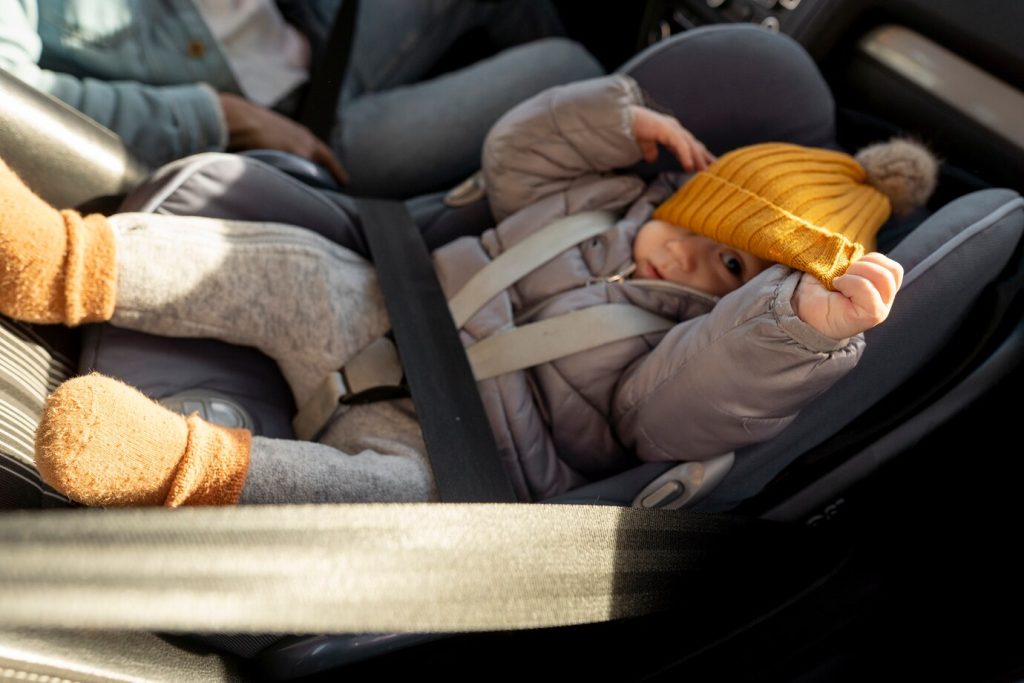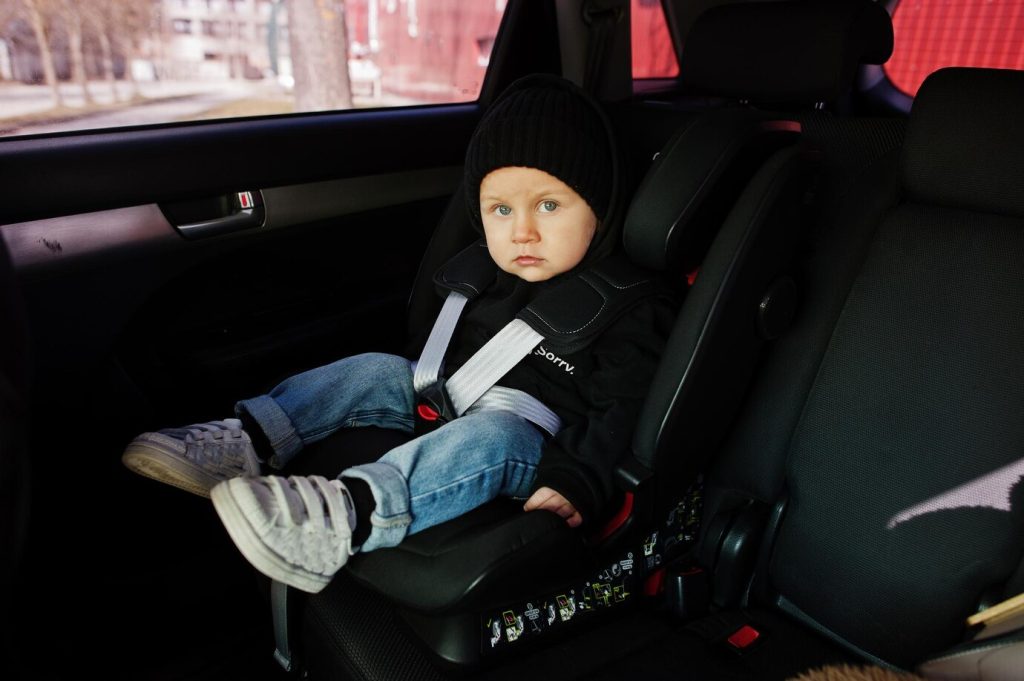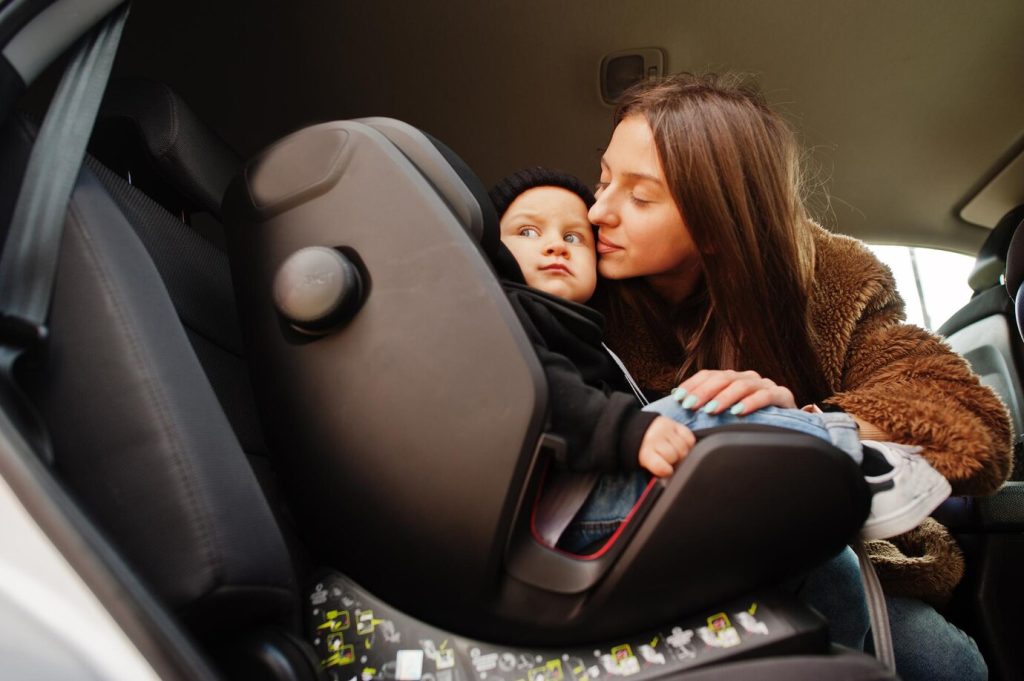How can you keep your child as safe as possible in the car?
Car seats and booster seats are designed to protect your little one in case of an accident, yet car crashes remain one of the leading causes of death for children between 1 and 13 years old. This is why choosing the right seat and using it correctly every single time is so important. Properly installed car seats can reduce the risk of serious injury, hospitalization, or even death by more than 70% compared to just using a seat belt or no restraint at all.
It’s not just about following the law—it’s about giving your child the best possible protection. Whether you’re taking a quick trip to the store or heading out on a long road trip, making sure your child is securely buckled in can make all the difference. Your child’s safety is in your hands, and taking a few extra minutes to ensure their car seat is installed correctly can provide peace of mind and life-saving protection.
Why Are Car Seats Important?
Have you ever wondered why car seats are such a big deal? It’s simple—because they save lives. Car seats are specially designed to protect babies and young children in a way that regular seat belts just can’t. A child’s body is still developing, and in a crash, the force can be too much for them to handle without the right protection. That’s where car seats come in—they help absorb impact, keep children securely in place, and prevent serious injuries.
The statistics are clear: children who ride in properly installed car seats are much safer than those who don’t. In fact, car seats can reduce the risk of serious injury by more than half. Without one, even a small crash can cause life-threatening harm.
But it’s not just about having a car seat—it’s about using the right one for your child’s age, weight, and height. Rear-facing seats provide the most protection for infants and toddlers, while forward-facing seats and booster seats keep older kids safe as they grow. The key is making sure the seat is installed correctly and used every time, no matter how short the trip.
As parents and caregivers, keeping our little ones safe is our top priority. Car seats aren’t just a piece of baby gear—they’re one of the most important safety tools you’ll ever use. Taking the time to choose the right seat and making sure it’s used properly can make all the difference in protecting your child on the road.
Car Seats Types
Did you know there are four different types of car seats, each designed to keep your child safe at different stages of growth? As your little one gets bigger, the way they ride in the car will change. That’s why it’s so important to choose a seat that’s just right for their age, height, and weight.
Before you buy a car seat, here are a few things to keep in mind:
- Size Matters – Your child’s safety depends on using a car seat that fits them properly. A seat that’s too big or too small won’t provide the protection they need in a crash. Always check the weight and height limits to make sure you’re using the right one.
- Not Every Car Seat Fits Every Car – Some car seats don’t work well in certain vehicles. Before you make a purchase, try installing the seat in your car to ensure it fits securely and doesn’t move around too much.
- Ease of Use is Key – Car seats only works if they’re installed and used correctly every single time. Look for one that’s easy to secure in your car and simple to buckle your child into. A properly installed seat should feel snug and not shift more than an inch in any direction.
Keeping your child safe on the road starts with choosing right car seats. Taking a little extra time to find one that fits both your child and your vehicle can make a huge difference in their protection.
Now, let’s take a closer look at the four types of car seats and how they help keep your child safe at different stages.
1. Rear-Facing Car Seats

When it comes to keeping your little one safe on the road, a rear-facing car seat is the best choice for young children. These seats are specially designed to provide the highest level of protection by cradling your child in the event of a crash. They distribute the force of impact evenly, helping to protect your baby’s delicate neck and spine.
There are three main types of rear-facing car seats, each offering different features as your child grows:
- Infant Car Seat (Rear-Facing Only): Perfect for newborns and small babies, these seats are lightweight, portable, and designed to be used only in the rear-facing position. However, babies often outgrow them before their first birthday. When that happens, it’s time to switch to a convertible or all-in-one car seat to keep them safe.
- Convertible Car Seat: This seat grows with your child! It starts as a rear-facing seat and can later be adjusted to a forward-facing position when your child is ready. Since it accommodates a wider range of sizes, it allows children to stay rear-facing longer, which is the safest way for them to travel.
- All-in-One Car Seat: A long-term investment, this seat transitions from a rear-facing seat to a forward-facing seat with a harness and then to a booster seat as your child grows. Like the convertible seat, it lets children remain rear-facing for an extended period, offering extra protection during their early years.
Starting your child’s car seat journey with a rear-facing seat is the safest choice. The longer they can stay rear-facing, the better protected they’ll be in case of an accident.
2. Forward-Facing Car Seats

As your child grows, they will eventually transition to a forward-facing car seat. These seats come with a harness and tether that help keep your child secure by reducing their forward movement in the event of a crash. This added support helps protect their head, neck, and spine, which are still developing at this stage.
There are different types of forward-facing car seats, each designed to accommodate your child’s needs as they continue to grow:
- Convertible Seat: This seat starts as a rear-facing car seat and can later be switched to a forward-facing position with a harness and tether when your child is big enough. It’s a great option because it allows children to stay rear-facing longer before transitioning.
- Combination Seat: Designed for older toddlers and young children, this seat begins as a forward-facing car seat with a harness and tether for added security. As your child grows, it can be converted into a booster seat, making it a versatile option that lasts for several years.
- All-in-One Seat: This seat adapts to every stage of your child’s car seat journey. It starts as a rear-facing seat, transitions into a forward-facing seat with a harness and tether, and eventually becomes a booster seat. Because it adjusts to fit different stages of development, it provides a long-term safety solution.
Moving to a forward-facing car seat is an exciting milestone, but safety should always come first. Keeping your child in a harnessed seat as long as possible ensures they have the best protection while on the road.
3. Booster Seats
As children grow, they eventually outgrow their forward-facing car seat, but they’re still not quite ready for a regular seat belt. That’s where a booster seat comes in! A booster raises your child to the right height so the vehicle’s lap-and-shoulder seat belt fits properly—resting across their chest and hips instead of their neck or stomach. This ensures they get the best possible protection in case of a crash.
There are several types of booster seats, each offering different features:
- High-Back Booster Seat: This type provides extra support by boosting your child’s height so the seat belt sits correctly. It also includes head and neck support, making it a great choice for cars without built-in headrests or high seatbacks. Because it has a similar structure to a forward-facing car seat, it can also help ease the transition from a harnessed seat. This type must always be used with a lap-and-shoulder seat belt.
- Backless Booster Seat: A more compact option, this booster also lifts your child to the right height but does not include head or neck support. It should only be used in vehicles that already have headrests or high seatbacks for proper protection. Like all booster seats, it must be used with a lap-and-shoulder seat belt for safety.
- Combination Seat: This versatile seat starts as a forward-facing car seat with a harness but can later convert into a booster seat when your child is ready. Some combination seats can be used in cars without headrests, but they must always be paired with a lap-and-shoulder seat belt.
- All-in-One Seat: Designed to grow with your child, this seat transitions from a rear-facing car seat to a forward-facing seat and then into a booster. When used as a booster, it must be paired with a lap-and-shoulder seat belt for proper safety.
A booster seat is a crucial step in your child’s car seat journey, helping them stay safe until they’re big enough to use a regular seat belt. Keeping your child in a booster until they meet the height and weight requirements for adult seat belts ensures they’re protected on every ride.
4. Seat Belts
Once your child is big enough to move on from a booster seat, using a seat belt correctly is essential for their safety. The seat belt should fit snugly, with the lap belt resting across the upper thighs—not the stomach—to protect against injury in a crash. The shoulder belt should lie across the chest and shoulder, never across the neck or face, to provide proper restraint.
A good rule of thumb is to make sure your child can sit all the way back against the car seat with their knees bending naturally at the edge of the seat. If the seat belt doesn’t fit properly yet, they should continue using a booster seat until they are tall enough for a secure and comfortable fit. Ensuring the seat belt is positioned correctly every time they ride helps keep them safe on the road.
Car Seats Installation: Key Parts and Helpful Tips
Making sure your child’s car seat is installed correctly is one of the most important steps in keeping them safe. A car seat that isn’t properly secured may not provide the protection your child needs in the event of a crash. Before installation, take some time to understand the key parts of both your vehicle and the car seat, and follow a few essential safety tips to ensure a secure fit.
Understanding Vehicle and Car Seat Parts
Car seats must be secured using either the lower anchors or the vehicle’s seat belt—never both at the same time. If using a seat belt, be sure to follow your car’s manual to learn how to properly lock it. For forward-facing car seats, always use the top tether if your vehicle has one. Knowing where these parts are and how they work will make installation easier and safer.
Vehicle Parts
- Lower Anchors – These anchors are built into the vehicle and allow you to secure the car seat using its lower anchor attachments. They are usually located in at least two rear seating positions and can be found between the seat’s backrest and bottom cushion (also called the “seat bight”).
- Tether Anchor – This anchor point is used to attach the car seat’s tether strap, which helps keep the seat stable and prevents excessive forward movement during a crash. In sedans, the tether anchors are often located on the rear shelf behind the back seat. In larger vehicles like SUVs, vans, or trucks, they may be found on the seatback, floor, ceiling, or another designated location. Be sure to check your car’s manual to find the correct tether anchors and avoid mistaking them for luggage tie-downs or other hardware.
Car Seat Parts
- Lower Anchor Attachments – These are the straps or connectors on car seats that attach to the vehicle’s lower anchors. They provide a secure installation without needing to use the seat belt.
- Tether Strap – Found on the top back of forward-facing car seats, the tether strap helps reduce forward movement in a crash. It has an adjustable strap and a hook that connects to the vehicle’s tether anchor. While most rear-facing car seats do not use a tether, always check your car seat manual to see if it is recommended for your specific model.
Installation Tips and Weight Limits
- Always Follow Manufacturer Instructions – Each car seat and vehicle is different, so carefully read both the car seat manual and your car’s owner’s manual to ensure correct installation.
- Use the Tether for Forward-Facing Seats – The National Highway Traffic Safety Administration (NHTSA) strongly recommends using the tether whenever possible, whether you install the seat with lower anchors or a seat belt. This provides extra security and limits your child’s forward movement during a crash.
- Know the Lower Anchor Weight Limits – Vehicle and car seat manufacturers set weight limits for using the lower anchors. To find out the limit for your car seat, check the warning labels or diagrams on the side of the seat. If this information is not provided, you can calculate it using this formula:
- Lower Anchor Weight Limit = 65 lbs – Car Seats Weight
Once your child exceeds this weight limit, stop using the lower anchors and switch to securing the car seat with the vehicle’s seat belt.
By taking the time to properly install your child’s car seat and understanding how the different parts work, you can ensure they are as safe as possible on every ride. If you ever have doubts about your installation, consider visiting a certified car seat technician for guidance.
Conclusion
Keeping your child safe in the car is one of the most important responsibilities as a parent or caregiver. Choosing the right car seat, installing it correctly, and using it every time can significantly reduce the risk of serious injury in an accident. As your child grows, their car seat needs will change, but safety should always remain the top priority.
By taking the time to understand car seat types, proper installation techniques, and seat belt fit, you are giving your child the best protection possible. Every ride—whether short or long—should be a safe one. Stay informed, follow expert recommendations, and never hesitate to double-check your child’s seat for a secure fit. Your efforts today can make all the difference in keeping your little one safe on the road.
Read Also: “How to Make Your Toddler Bath Time Fun: 6 Easy Tips“
Follow us
